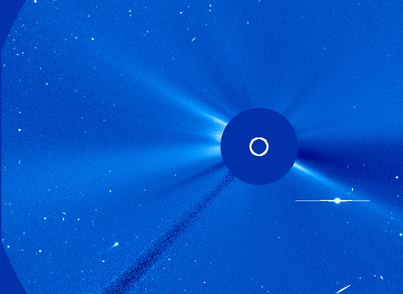The next few weeks are an ideal time to see Mercury & Venus together in the evening sky.
Mercury is always a difficult planet to find. It is the closest planet to the Sun, and so it always remains close to the Sun in the sky, usually totally hidden in the Sun's glare. But at the beginning of April (as the simulation below shows), Mercury gets to its Greatest Eastern Elongation, meaning that it is as far away eastwards of the Sun as it is ever going to get, and so it is the best time to see Mercury in the evening sky.
So wait for the Sun to set, and then go out and see if you can see Mercury for yourself! The best days to look are the 15th and 16th of April, when the Moon acts as a useful guide. This will be your best chance to see the elusive Mercury!
Each frame in the simulation above is a view looking west when the Sun is 6 degrees below the horizon (about 40 minutes after sunset) - that's dark enough to see Venus and Mercury, but not so late that they are hidden behind trees. The simulation was done using Stellarium.

